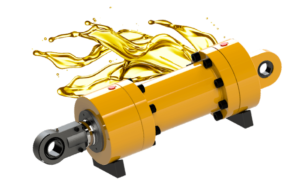
After the industrial revolution many classification systems were devised to designate viscosity grades for lubricants used in manufacturing and other industrial applications. While all of these have served useful purposes to some degree or another, it was confusing since different units were used to report viscosities such as Saybolt Universal Seconds, Redwood Seconds, Engler Degrees, Centistokes, and more.
To add to the confusion, two measures of temperature (Fahrenheit and Celsius) were used, not to mention that viscosities were specified at either 100°F or 40°C and 212°F or 100°C. This necessitated the need for a universally accepted viscosity classification system for industrial oils.
In response, the International Standards Organization (ISO) in collaboration with the American Society for Testing and Materials (ASTM), Deutsches Institut für Normung (DIN) and others formulated a common viscosity classification during 1975. The result is known as the International Standards Organization Viscosity Classification System, commonly known as ISO VG.
This classification is applicable to fluids for industrial applications, such as bearings, gears, compressor cylinders, hydraulics, turbines, etc. Viscosity values are reported in centistokes (cSt) and the reference temperature is 40°C which represents the operating temperature in machinery. The system comprises of 20 viscosity grades, ranging from 2 cSt to 3200 cSt. This covers fluids from as thin as paraffin to oils with a consistency similar to that of syrup. The viscosity of each grade within the classification is approximately 50% higher than the viscosity of the previous grade. The minimum and maximum limits of each grade are the mid-point viscosity plus or minus 10%. For example, ISO VG 100 has a mid-point viscosity of 100 cSt at 40°C with viscosity limits 90 cSt and 110 cSt:

ISO 3448 Viscosity Classification
This system does not evaluate the quality of a lubricant and applies to no property of a fluid other than its viscosity at the reference temperature. It does not relate to those lubricants that are used primarily with automotive equipment and are identified with a SAE number.

